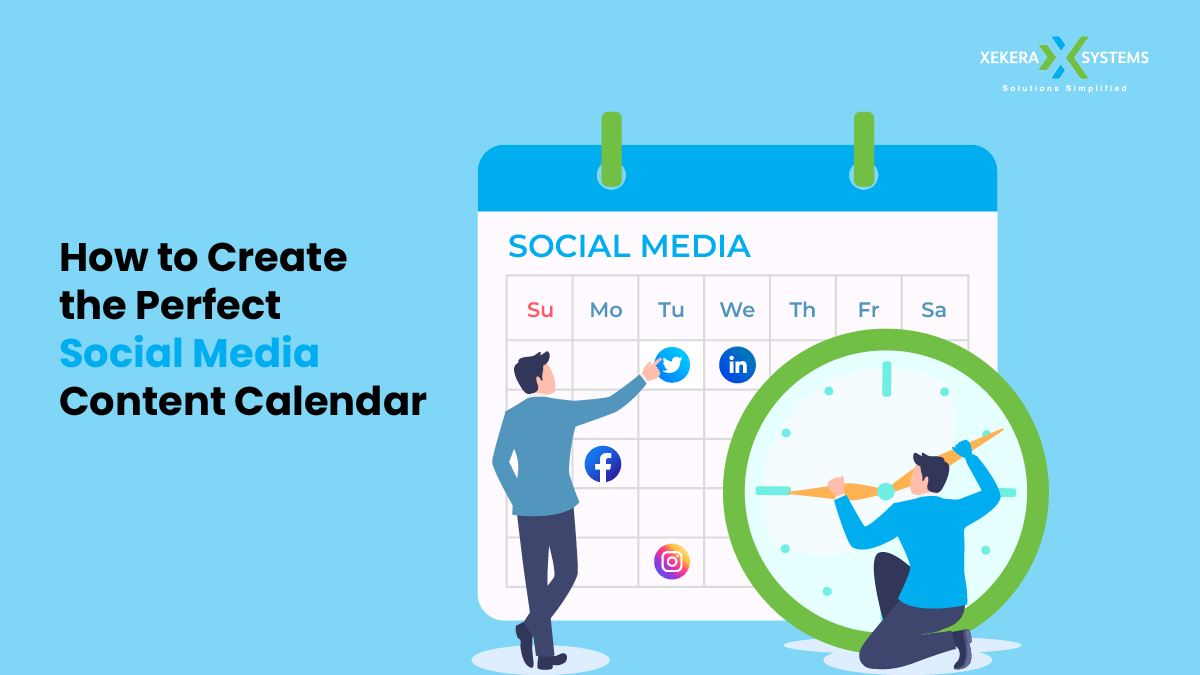Social media marketing helps businesses connect with their clients, customers and followers on a regular basis. Not only that, but social media is well known for helping businesses increase brand awareness and website traffic. A social media content calendar is a great option to meet the demands of posting and profiting on your company’s various social media accounts.
This blog explains how to create an effective and informative social media calendar for your company’s social media campaigns. Read below for more information.
Why is a social media calendar important?
Content calendars are important for the same reasons personal calendars are important. It helps you know what’s coming, what you need to prepare for, and what you might need to postpone.
When it comes to creating a social media content calendar, you can plan and create social media posts about important events, dates, holidays, and more. In the long run, this calendar will keep you from getting confused at the last minute Create a post and share it with your followers. Creating a social media calendar not only reduces stress, it can save you a lot of planning time. Because you already know when to post and what dates and events to post.
How to Create the Right Social Media Calendar for Your Unique Business
Every business is different, and so is your brand’s social presence. That means all social media calendars are different too. It’s your job to decide how often you post and what kind of content you choose based on your industry or niche.

1. Place Deciding Which Social Platforms Are Worth Your Time
What they don’t realize is that the time spent deciding what to post to a platform that isn’t working can waste valuable time improving the best performing platform. Before creating a social calendar, evaluate social platforms to decide which ones are worth your time.
In some industries LinkedIn is useless and unnecessary, in others Pinterest may be worthless. It all depends on your audience.
2. Determining a Specific Audience for Each Platform
To publish content that is most beneficial to your audience, you need to know who that audience is. First, create a spreadsheet listing all of your active social media platforms. Then use analytics to identify the demographics of the people who are most engaged with your posts.
Don’t be surprised if the target audience is similar across platforms. Always recommended to check. This allows you to determine exactly what kind of content you should post on each platform.
3. Monitor Your Competitors
A quick look at your competitors’ social profiles can add value to your strategy. It’s helpful to compare your strategy with theirs, as your social media campaigns are likely to benefit from the same strategy. Notice how often you post on each platform.
Pay attention to what kind of content is posted
Do her videos get a lot of shares? Do their photos get a lot of retweets? I definitely don’t want to share it with you. However, by paying attention to what you post and how often, you can greatly increase your social accounts.
4. Create a Content List
Seeing what your top competitors post and how often they give you all the information you need to create a content list for your account. When editing a list, you don’t have to immediately tag specific content items. it will come later.
For now, only post content types and how often you think you should post this type of content on each platform. Keep in mind that every platform behaves differently and receives different kinds of interactions. So what works for Facebook, a text-centric social platform, may not work well for Instagram, which is image-centric.
5. Finding Content Resources
Now that you’ve decided what kind of content you want to post on each platform, it’s time to create a collection of content. This is a tricky part as some content is time sensitive and posts are scheduled in advance in the content calendar. The best way to keep freshness from becoming an issue is to divide your content into time-sensitive and evergreen categories.
Time-sensitive content is content that you know must be shared by a certain date, while evergreen content can be used to fill in the gaps. Collecting and curating content might sound daunting, but it’s really easy. Easily organize your URLs in Google Docs with “time-sensitive” and “evergreen” article headings
You can also save your content collection to a spreadsheet. As a final tip, don’t forget to add your own his website content to your content collection. Companies can get so caught up in publishing academic papers or republishing someone’s industry videos that they forget about their own blogs and videos.
Posting unique content is one of the best ways to increase your website traffic and you can’t miss it. It’s also useful for organizing “latest” and “evergreen” content into content types such as long-form and blogs. This will help you plan your content.
6. Create a Calendar
There are several ways to create a content calendar for your social media accounts. I personally like it simple. Open a Google Sheet and create a tab for each next month.
From there, you can color code each social platform so you can see at a glance how often you post on a particular platform during a particular week. Spreadsheets also work well as calendars, as you can lay out your days side by side and plan when you want to post.
Let’s start with Facebook, for example. If you decide to post on Facebook 4 times a week, use the color you chose to represent Facebook and add it randomly to your calendar for the month 4 times a week. Do the same for other platforms
Next, check the type of content you post. If you want your Facebook profile to receive your blog and two in-depth articles per week, simply return to the table of contents and select the appropriate URL. You can insert this as a comment in the cell.
Repeat this process for each platform.
7. With scheduling tools like Buffer
Buffer is one of the best social media automation tools. You can add all your social profiles in one place and schedule each post for a specific date and time. Once the calendar is ready, we need to load all the content using a Buffer.

Automatically published on the reserved date. It’s as easy as that!
Social media doesn’t have to be overwhelming.
If you’re overwhelmed by all of social media, or just the thought of creating a social media calendar for your business, Xekera Systems can help. We are a full service internet marketing agency based in Santa Clara, CA.
Get all the help you need for your social media campaigns. Feel free to contact us online or call us at (408) 982-5851.



